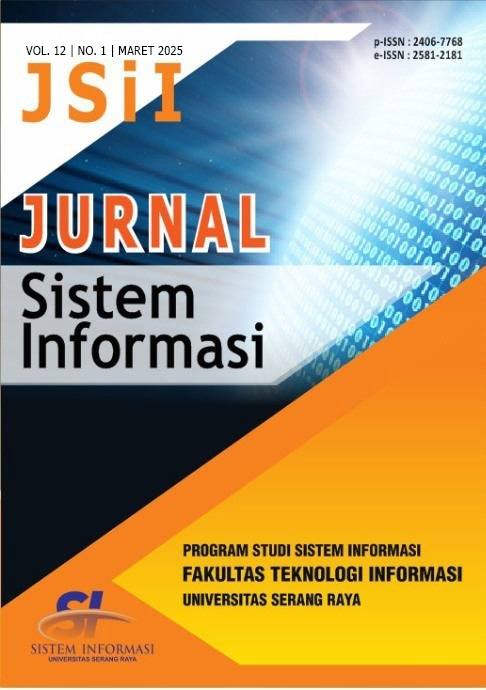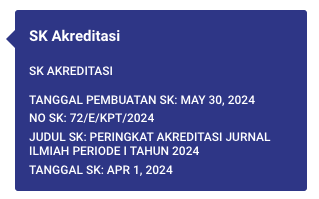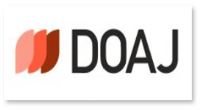PERFORMANCE EVALUATION OF LIGHTWEIGHT OBJECT DETECTION MODELS FOR REAL-TIME PERSONAL PROTECTIVE EQUIPMENT DETECTION IN THE CONSTRUCTION SITES
DOI:
https://doi.org/10.30656/jsii.v12i1.9896Abstract
The environment of construction industry was known to have a high risk and high number of occupational accidents and injuries. One of the main causes of the occurrences was the construction workers' negligence in wearing personal protection equipment. Computer vision-based approaches were developed to assist in personal protective equipment adherence to address this issue. Using lightweight machine learning algorithms, object recognition can help to detect if the PPEs are worn correctly. We evaluated performance of YOLOv8-Nano and YOLOv9-Tiny (state of the art lightweight object detection models). Custom dataset was used for training the models and then metrics like F1 score, precision, recall mAP50 and mAP50-95 were used to evaluate both models’ performance. Results found that both models were able to show promising real time detections, but the YOLOv9-Tiny model was able to outperform the YOLOv8-Nano model on many evaluation metrics. Specifically, in terms of mAP, YOLOv8-Nano achieved an mAP50 of 81.48, while YOLOv9-Tiny attained a slightly higher mAP50 of 82.70. Higher efficiency in these parameters will help small industry to enforce PPE adherence monitoring using edge device at a relatively low cost. Lastly, enhanced enforcement of PPE regulations through automated detection system can contribute to improve workplace safety which in turns will lead to less injuries.
Keywords: Object Recognition, Computer Vision, Machine Learning, Lightweight, Personal Protective Equipment, YOLO
References
[1] Z. Wang, Y. Wu, L. Yang, A. Thirunavukarasu, C. Evison, and Y. Zhao, “Fast Personal Protective Equipment Detection for Real Construction Sites Using Deep Learning Approaches,” Multidisciplinary Digital Publishing Institute, vol. 21, no. 10, p. 3478, 2021, doi: 10.3390/s21103478.
[2] J. Karlsson, F. Strand, J. Bigün, F. Alonso‐Fernandez, K. Hernandez‐Diaz, and F. Nilsson, “Visual Detection of Personal Protective Equipment and Safety Gear on Industry Workers,” pp. 395–402, 2023, doi: 10.5220/0011693500003411.
[3] A. D. Rafindadi, M. Napiah, I. Othman, H. Alarifi, U. Musa, and M. A. Muhammad, “Significant factors that influence the use and non-use of personal protective equipment (PPE) on construction sites—Supervisors’ perspective,” Elsevier BV, vol. 13, no. 3, p. 101619, 2022, [Online]. Available: https://www.sciencedirect.com/science/article/pii/S2090447921003841
[4] Q. Huang et al., “Occupational health risk assessment of workplace solvents and noise in the electronics industry using three comprehensive risk assessment models,” Front Public Health, 2023, [Online]. Available: https://scite.ai/reports/10.3389/fpubh.2023.1063488
[5] Md. S. Ferdous and Sk. Md. M. Ahsan, “PPE detector: a YOLO-based architecture to detect personal protective equipment (PPE) for construction sites,” PeerJ, Inc., vol. 8, pp. e999–e999, 2022, [Online]. Available: https://doi.org/10.7717/peerj-cs.999
[6] V. S. K. Delhi, R. Sankarlal, and A. Thomas, “Detection of Personal Protective Equipment (PPE) Compliance on Construction Site Using Computer Vision Based Deep Learning Techniques,” Front Built Environ, vol. 6, 2020, [Online]. Available: https://doi.org/10.3389/fbuil.2020.00136
[7] E. M. Mandar, W. Dachry, and B. Bensassi, “Toward a Real-Time Personal Protective Equipment Compliance Control System Based on RFID Technology,” 2021, pp. 553–565. doi: 10.1007/978-981-15-6048-4_48.
[8] J.-H. Lo, L.-S. Lin, and C.-C. Hung, “Real-Time Personal Protective Equipment Compliance Detection Based on Deep Learning Algorithm,” Sustainability, vol. 15, no. 1, p. 391, 2022, [Online]. Available: https://doi.org/10.3390/su15010391
[9] M. A. Hasiloglu and T. Tatar, “Prediction of Building Damage Caused by Earthquake with Machine Learning,” Academic Perspective Procedia, vol. 5, no. 2, pp. 72–82, Nov. 2022, doi: 10.33793/acperpro.05.02.2001.
[10] A. Ishtiaq, Z. Saeed, M. U. Khan, A. Samer, M. Shabbir, and W. Ahmad, “Fall Detection, Wearable Sensors & Artificial Intelligence: A Short Review,” JAREE (Journal on Advanced Research in Electrical Engineering), vol. 6, no. 2, Oct. 2022, doi: 10.12962/jaree.v6i2.323.
[11] K. Kyivska and S. Tsiutsiura, “Implementation of artificial intelligence in the construction industry and analysis of existing technologies,” Technology audit and production reserves, vol. 2, no. 2(58), pp. 12–15, Apr. 2021, doi: 10.15587/2706-5448.2021.229532.
[12] Z. Zou, K. Chen, Z. Shi, Y. Guo, and J. Ye, “Object Detection in 20 Years: A Survey,” Institute of Electrical and Electronics Engineers, vol. 111, no. 3, pp. 257–276, 2023, doi: 10.1109/jproc.2023.3238524.
[13] B. Xing, W. Wang, J. Qian, C. Pan, and Q. Le, “A Lightweight Model for Real-Time Monitoring of Ships,” Multidisciplinary Digital Publishing Institute, vol. 12, no. 18, p. 3804, 2023, doi: 10.3390/electronics12183804.
[14] N. Ma Muriyah, J. H. Sim, and A. Yulianto, “Evaluating YOLOv5 and YOLOv8: Advancements in Human Detection,” Journal of Information Systems and Informatics, vol. 6, no. 4, pp. 2999–3015, Dec. 2024, doi: 10.51519/journalisi.v6i4.944.
[15] P. Mittal, “A comprehensive survey of deep learning-based lightweight object detection models for edge devices,” Springer Science+Business Media, vol. 57, no. 9, 2024, doi: 10.1007/s10462-024-10877-1.
[16] H. Herman, Y. J. Kumar, Y.-W. Sek, and V. K. Perhakaran, “A Systematic Review on Deep Learning Model in Computer-aided Diagnosis for Anterior Cruciate Ligament Injury,” Bentham Science Publishers, vol. 20, no. undefined, 2024, doi: 10.2174/0115734056295157240418043624.
[17] N. D. Nath, A. H. Behzadan, and S. G. Paal, “Deep learning for site safety: Real-time detection of personal protective equipment,” Elsevier BV, vol. 112, no. undefined, p. 103085, 2020, doi: 10.1016/j.autcon.2020.103085.
[18] X. Ke, W. Chen, and W. Guo, “100+ FPS detector of personal protective equipment for worker safety: A deep learning approach for green edge computing,” Springer Nature, vol. 15, no. 2, pp. 950–972, 2021, doi: 10.1007/s12083-021-01258-4.
[19] M. I. Al-Khiami and M. ElHadad, “Enhancing Construction Site Safety Using AI: The Development of a Custom Yolov8 Model for PPE Compliance Detection,” University College Dublin, vol. 5, no. undefined, 2024, doi: 10.35490/ec3.2024.307.
[20] A. Tripathi, V. Gohokar, and R. Kute, “Comparative Analysis of YOLOv8 and YOLOv9 Models for Real-Time Plant Disease Detection in Hydroponics,” Engineering, Technology & Applied Science Research, vol. 14, no. 5, pp. 17269–17275, 2024, doi: 10.48084/etasr.8301.
[21] M. Yaseen, “What is YOLOv8: An In-Depth Exploration of the Internal Features of the Next-Generation Object Detector,” 2024. doi: 10.48550/arxiv.2408.15857.
[22] S. Li, H. Huang, X. Meng, M. Wang, J. Wang, and L. Xie, “A Glove-Wearing Detection Algorithm Based on Improved YOLOv8,” Multidisciplinary Digital Publishing Institute, vol. 23, no. 24, p. 9906, 2023, doi: 10.3390/s23249906.
[23] N. Rizzieri, L. Dall’Asta, and M. Ozoliņš, “Diabetic Retinopathy Features Segmentation without Coding Experience with Computer Vision Models YOLOv8 and YOLOv9,” Multidisciplinary Digital Publishing Institute, vol. 8, no. 3, p. 48, 2024, doi: 10.3390/vision8030048.
Downloads
Published
Issue
Section
License
Copyright (c) 2025 Herman, Sandy Alferro Dion, Andik Yulianto

This work is licensed under a Creative Commons Attribution-ShareAlike 4.0 International License.
- This work is licensed under a Creative Commons Attribution-ShareAlike 4.0 International License.
-
Author(s)' Warranties
The author warrants that the article is original, written by stated author(s), has not been published before, contains no unlawful statements, does not infringe the rights of others, is subject to copyright that is vested exclusively in the author and free of any third party rights, and that any necessary written permissions to quote from other sources have been obtained by the author(s).
- Information
- Notice about change in the copyright policy of the journal 'Jurnal Sistem Informasi (JSiI)' : "From Vol 1, onwards the copyright of the article published in the journal 'Jurnal Sistem Informasi' will be retained by the author"













.jpg)














